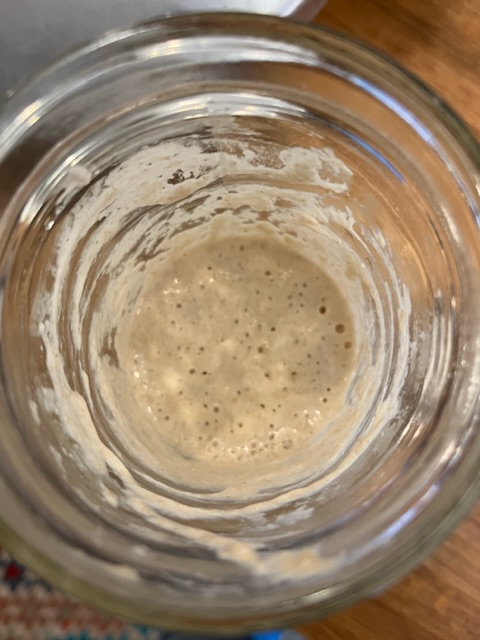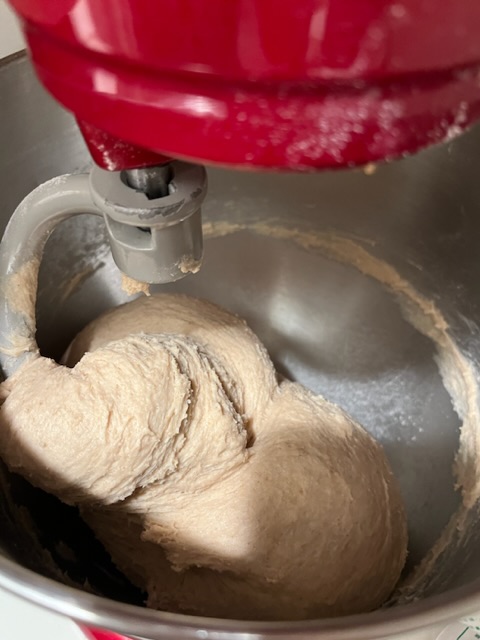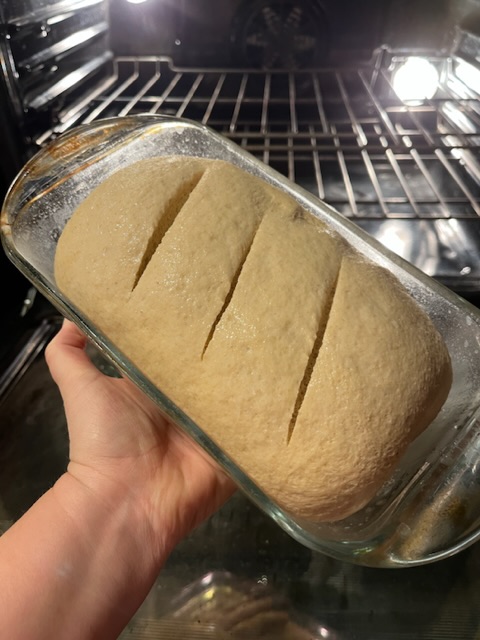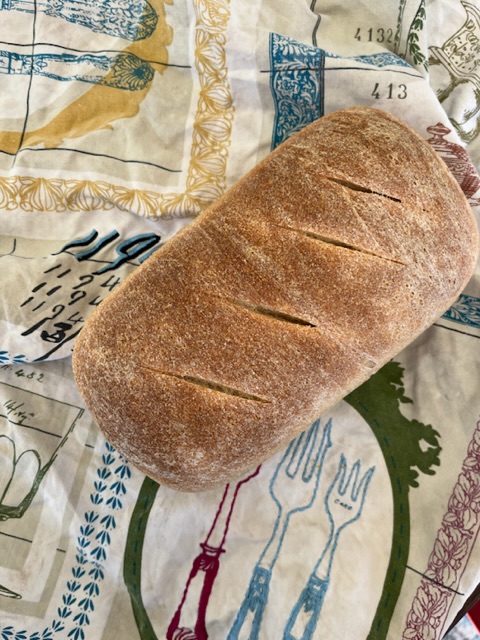Sourdough – leaven for making bread, consisting of fermenting dough, typically that left over from a previous batch.
Sourdough bread has always been a favorite among professional bakers but it has hit the home baking world by storm. I think COVID19 lockdowns (no yeast on the grocery shelves & people with lots of time on their hands) definitely helped. I also think that people are questioning current diet recommendations as they see their health & that of their family decline, this is especially true when it comes to gluten and bread.
“Our ancestors, and virtually all pre-industrialized peoples, soaked or fermented their grains before making them into porridge, breads, cakes and casseroles. A quick review of grain recipes from around the world will prove our point…Europeans made slow-rise breads from fermented starters; in America the pioneers were famous for their sourdough breads, pancakes and biscuits; and throughout Europe grains were soaked overnight, and for as long as several days, in water or soured milk before they were cooked and served as porridge or gruel.” – Sally Fallon WAP Foundation “Be Kind to Your Grains”
The idea of fermenting grains is definitely not new but making sourdough bread at home can be daunting even for an experienced baker. I have made baked goods with sourdough for years but I would often feel bloated and feel yucky. This was because I was using processed flour with all the nutrients stripped away & synthetic vitamins added to “enrich” the nutrient stripped grain. When I switched to fresh milling 100% I saw a huge difference in my health. My brain fog, which was a daily issue, completely lifted after 6 days of eating baked goods made with fresh milled flour. I was amazed & I knew the switch to fresh milled flour would be permanent.
I still wondered about sourdough and the benefits of long fermentation but I set it aside while I worked to adapt recipes and teach others how to bake using fresh milled flour. Sourdough was still in the back of my mind and I often got questions about it in class.
Out came my old starter and I began to try mixing the benefits of sourdough with the benefits of fresh milling – our ancestors did it, surely I could too. After months of trying I did it!
This basic sourdough is a workhorse and can be used to make…
- a sandwich loaf
- baguettes
- donuts
- and lots more but that is all I have tried
You can make this recipe and bake in the same day or you can let it ferment overnight. The truth is, this is a sourdough recipe that isn’t finicky – it can take quite a bit and still work.




Basic Sourdough with Fresh Milled Flour
This is my fresh milled adaption of the sourdough recipe found at venisonfordinner.com. It only needed a few tweaks but they are all important if you are using fresh milled flour. This recipe can be doubled to make 2 loaves or 1 loaf & something else. Like all long ferments, be sure and plan ahead so you can mix the levain 8-12 hours before you are ready to bake & have plenty of time for the three rises.
Ingredients
Levain
- 1/2 cup sourdough starter
- 1/2 cup warm water
- 2/3 cup flour For the levain you can use fresh milled hard wheat or all purpose flour. I am not concerned about using all purpose here because it benefits from the long ferment.
Dough
- Levain (see above)
- 1 TBS unsalted butter
- 1 TBS honey or preferred sweetener
- 1 ¼ tsp salt
- 3/4 cup milk sub non dairy for DF
- 1 TBS gluten
- 2-2 ½ cup fresh milled hard wheat I use hard white
Instructions
Levain
-
Mix the levain ingredients 8-12 hours before you plan to bake. I do this right before I go to bed, cover with a shower cap and let sit on the counter until the morning when I begin baking.
Dough
-
Melt butter, milk, honey, & salt on low in a saucepan, stirring to combine. Turn off the heat just as the butter melts and let the mixture cool. You want it around 105F
Place the warm liquid in the bowl of a stand mixer and add your levain.
Add 2 cups of flour and the gluten, mix the dough using a dough hook, adding more flour just as needed. This is a soft dough so it is ok if it is a little sticky. Knead for 10 minutes if using a mixer and 15 if kneading by hand.
Remove dough from the bowl, spray it with a little oil and return the dough to the bowl.
THIS DOUGH HAS THREE RISES.
Rise 1: Cover with a shower cap and let rise in a warm place for 2-3 hours. It should have almost doubled.
Rise 2: Punch down and form into a ball then let rise another 2-3 hours.
*Watch the dough not the clock. Depending on the temperature of your home and time of year the rise may take less or more time.
Rise 3: **Remove the dough from the bowl and place in oiled loaf pan & cover. Let rise until doubled OR spray with a little water and place in the refrigerator for an overnight rise.
**I am going to give instructions for a sandwich loaf here but will share the instructions for other options in individual posts.
If baking immediately: Slice the top of the dough with a serrated knife, this prevents cracking, bake in a preheated 375F oven for 30-40 minutes. The bottom of the loaf should be golden, check by carefully tilting the bread out of the loaf and peeking at the bottom, use oven mitts to protect your hands. If it is NOT golden, place it back in the loaf pan and bake for another 5 minutes, check again.
Once baked, immediately remove the loaf from the pan and place on a cooling rack. Brush with butter if desired, this helps keep the crust soft. Let cool completely before slicing.
If doing an overnight refrigerator rise: Remove from the refrigerator and keep covered let the dough get back to room temp before following instructions for baking (see above).




